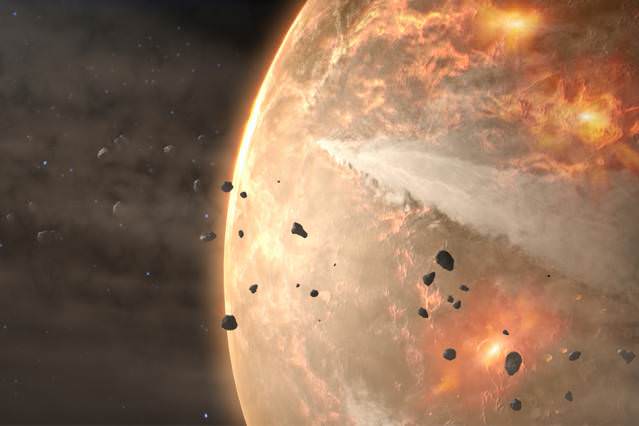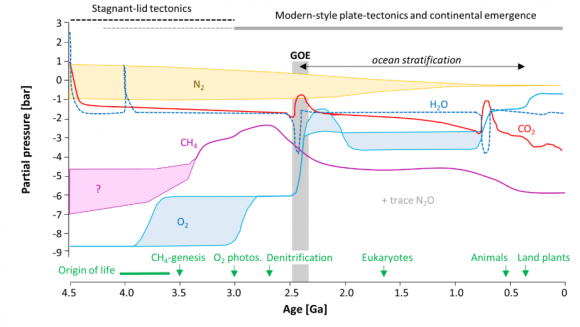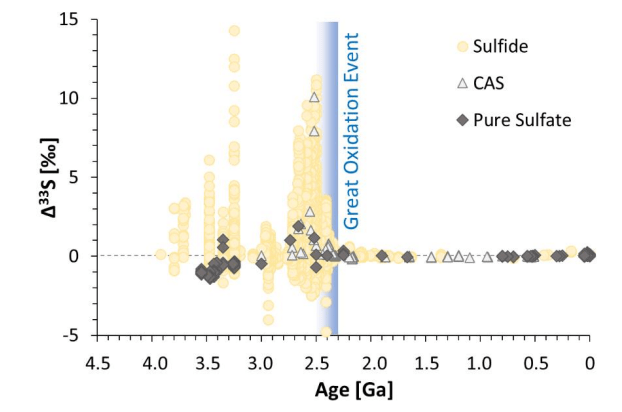What Early Earth Teaches Us About Finding Life
Key Takeaway:
The study of early Earth provides a fascinating glimpse into the conditions that existed billions of years ago, offering valuable insights into the origins of life on our planet. By examining the harsh environments in which life thrived and the chemical processes that gave rise to living organisms, scientists can draw parallels to the search for life beyond Earth.
Summary:
- Earth’s atmosphere has changed significantly over its 4.5 billion years of existence.
- Research on early Earth’s biogeochemistry helps in evaluating exoplanetary potential for life.
- Earth’s microbial biosphere thrived under different atmospheric conditions, providing insights into remote detection of life.
- Plate tectonics and atmospheric processes have influenced Earth’s atmosphere over time.
- Lessons from Earth include the presence of multiple atmospheric stages, altered rock records, delayed detection of oxygen, and the impact of plate tectonics on chemistry.
- Remote detection of exoplanetary biospheres relies on telescopic observations of atmospheric composition.
- Advanced telescopes like the JWST are enhancing our ability to detect chemicals in exoplanet atmospheres.
- Future tools may enable the recognition of surface features indicative of life.
- Earth serves as a model for understanding and accelerating the search for life beyond our solar system.

Exploring Early Earth: Lessons for the Search for Life
Earth stands as a unique oasis of life in the vast expanse of the cosmos. Its evolution over billions of years offers a window into the potential for life on other planets. By Decoding the mysteries of Earth’s past, scientists gain valuable insights into how to search for life beyond our solar system.
Earth’s atmosphere has experienced significant changes since it first formed 4.5 billion years ago. Initially, it lacked oxygen and was described as anoxic. Over time, a series of geological and biological processes reshaped the atmosphere. One crucial event, known as the Great Oxygenation Event, occurred approximately 2.4 billion years ago. During this event, oxygen began to accumulate in the atmosphere, primarily due to the emergence of photosynthetic organisms.
“Earth’s atmospheric composition is very strongly controlled by life.” – Research findings

Lessons from Earth’s Biogeochemical Evolution
- Multiple Atmospheric Stages: Earth has experienced three distinct atmospheres, each influenced by different factors such as outgassing and biological activity. Understanding these stages provides a framework for evaluating exoplanetary atmospheres.
- Altered Rock Records: Geological evidence of early life on Earth is scarce due to the alteration and destruction of rock records over time. This challenges our ability to reconstruct the early biosphere accurately.
- Delayed Oxygen Detection: Oxygenic photosynthesis appeared long before atmospheric oxygen became detectable. This suggests that exoplanets may host oxygen-producing life forms without immediately exhibiting atmospheric oxygen.
- Impact of Plate Tectonics: Changes in Earth’s tectonic activity influenced atmospheric chemistry, affecting the detectability of biosignatures such as methane. Horizontal plate tectonics played a crucial role in shaping Earth’s atmospheric evolution.
While Earth offers tangible evidence through geological records, the search for life beyond our solar system relies on remote observation. Telescopes like the James Webb Space Telescope (JWST) enable scientists to analyze exoplanet atmospheres for chemical signatures indicative of life.
“We must remotely recognize the presence of alien biospheres and characterize their biogeochemical cycles in planetary spectra obtained with large telescopes.” – Research conclusions

Advancements in Exoplanet Exploration
- Atmospheric Chemistry Analysis: The JWST has revolutionized exoplanet exploration by identifying chemicals in distant atmospheres. Detection of carbon dioxide in exoplanet atmospheres represents a significant milestone in our quest to understand extraterrestrial environments.
- Surface Feature Recognition: Future telescopes may enable the identification of surface features indicative of life, such as light interaction with photosynthetic pigments and glint from liquid oceans.
Earth’s rich history serves as a blueprint for the exploration of life beyond our solar system. By deciphering Earth’s complex biogeochemical evolution, scientists can refine their search strategies and accelerate the quest for extraterrestrial life.

As humanity ventures into the unknown regions of space, Earth remains our guiding beacon. Through thorough study and technological innovation, we inch closer to unlocking the secrets of the cosmos. Each discovery brings us closer to answering one of the most profound questions: Are we alone in the universe?
Hashtags:
#Exoplanets, #Astrobiology, #Biogeochemistry, #SpaceExploration

